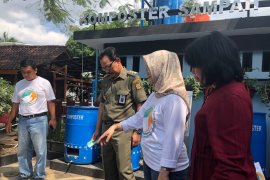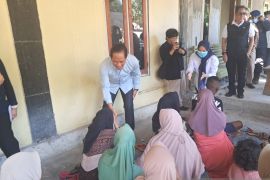At the 2024 Waste Bank National Coordination Meeting in Jakarta on Wednesday, Ansjar said that the ratio of community participation is still low, namely at 3.24 per 1,000 population.
"If the ratio value is like this, achieving the waste reduction target in Jakstrada (Regional Policies and Strategies in Waste Management) is still difficult. It requires hard work from environment offices and waste banks," she added.
Taking note of this, she pressed for increasing the community participation ratio to support efforts to reduce waste to 30 percent of the total waste generated.
This has been deemed necessary considering that the average annual waste reduction in 2023 stood at 14 percent of the total waste generated.
"Thus, it is still very low. For that reason, we must boost waste reduction," she said.
Some of the efforts that can be made to improve waste banks' performance, she explained, include supporting the transformation of waste banks into social businesses so that they can operate well.
"It is also necessary to build networks between off-takers, waste banks, and regional governments," she said.
According to the Environment and Forestry Minister's Regulation Number 14 of 2021, waste banks are facilities for managing waste on the principle of reduce, reuse, and recycle (3R) and serve as a means of education, behavior change, and circular economy implementation.
Waste banks can be established and managed by communities, business entities, and regional governments.
Based on data from the Waste Bank Management Information System of the Ministry of Environment and Forestry, as of 2024, as many as 30,148 waste banks have been established across neighborhoods in Indonesia.
Related news: Govt urges regions to support waste bank operation
Related news: Ministry presses for improving waste sorting management
Translator: Prisca Triferna, Raka Adji
Editor: Rahmad Nasution
Copyright © ANTARA 2024












